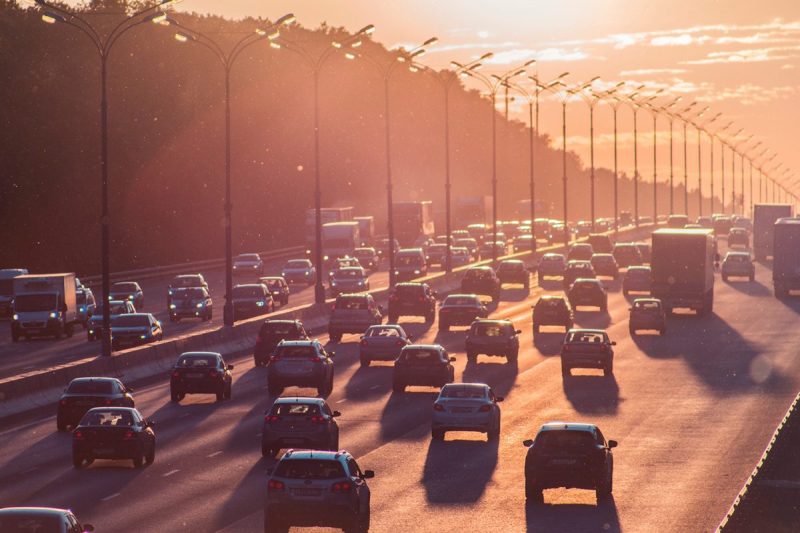It’s estimated that 80 percent of drivers get road rage. Couple that with the fact that we spend 300 hours driving each year and it’s no surprise this no-man’s-land of brake tapping, blinker-avoiding, and cut-offs has created a lump of stress in our everyday lives.
To better understand how to deal with road rage and overcome the frustrations of driving, we asked Dr. Robert Nemerovski, a psychologist and leading authority on anger and road rage to share some tips.
What Is Road Rage?
Road rage is an escalation between two or more drivers. Nemerovski says drivers enter a dysfunctional communication without any means to talk about it, so they act out their frustrations with moving vehicles. The escalation occurs because we are primed to be on the lookout for bad drivers. In essence, we’re looking for people to be mad at, or someone to delay or offend us.

We’re All ‘Bad’ Drivers
“Remember, we’re all in it together,” Nemerovski says.
According to Nemerovski, our perception of what road rage looks like has been largely shaped by the media to encompass bat-wielding hillbillies and trigger-happy macho men. Obviously, that isn’t us, right? To a lesser extreme, we still look at road rage expressions like tailgating, flashing lights, flipping off, shouting obscenities, or brake-tapping as an exchange between a perpetrator and victim. When we experience these, we become the victim.
The truth is, we all contribute to each others’ experience on the road. In Nemerovsk’s doctoral research, he asked subjects to identify the signs or behaviors of road rage and then say which they had done. “It was mind-blowing because the subjects always felt they were right, law-abiding, good drivers, but admitted to doing these things,” he tells The Manual.

All it takes is one person to cut in traffic and we feel they are the perpetrator and we are the victim. That makes us angry. “People drive around with a lot of anger. The media has drawn a line between normal driving anger vs road ragers, but the reality is that everyone’s annoyance, frustration, and anger impacts other drivers,” says Nemerovski.
How to Deal with Road Rage
Set the Mood
Be mindful of the emotions you’re bringing into your car. Tough day at work? Fight with your S.O? Too much whiskey the night before? You are responsible for setting the mood in your car so that you can participate on the road with the least frustration. Save your ’80s death metal for the gym. Play music that puts you in a good headspace, try a quick meditation, set the temperature, take a drink of water, then hit the pedal to the metal.
Stop Making Personality Assessments
You’re driving and someone on the road does something wrong. Notice if your mind goes directly to analyzing their personality or jumping to conclusions about where they live, their job, or political affiliation. “It’s a phenomenon called dehumanization,” Nemerovski says. “You can allow yourself to be more aggressive toward someone when seeing them less as a human.” (Ever heard of the Stanford prison experiment?)

You actually know nothing about that person and have no right to feel superior or to act in a dangerous way that values their life and welfare as less than your own. If someone cuts you off, tap into your humor reserve and think, “They’re probably late to class or about to pee their pants.” We’ve all been there.
Experiment With Kindness
Purposefully allow others to merge and pass. Yeah, be intentionally nice. It could cause a chain reaction of kindness that circles back to you when you need it most, or at the very least you’ll see how easy it is and that being nice doesn’t delay your trip too much.
Take the High Road
Change lanes, let the pedal-pusher pass, and forfeit the juvenile battle of acting out on the road. If you’re measuring your worth as a man by beating a grandma to the next red light, you might want to consider talking with an expert like Nemerovski. There’s no shame in wanting to understand your anger.

When you take the high road, don’t view this as a loss but as a sign of intelligence to disengage, back off, move lanes, or pull over if someone is very aggressive.
Assume People Are Crazy
We’re primed to look for bad drivers but we don’t always assume they’re crazy. Nemerovski suggests assuming other drivers can potentially be easily triggered or unhinged, or are looking to take their internal or unrelated aggression out on you. It may be a little morbid, but this preconception should make it easier to say, “You know what? Not worth my time or safety.” Before “teaching them a lesson” by tapping your breaks (which is very dangerous, Nemerovski says), remember you’re responsible for either contributing to or calming down an escalation.
Play Grand Theft Auto
OK, Nemerovski didn’t suggest this, but our personal recommendation for dealing with road rage or discharging any leftover hard feelings after your commute home is booting up the PlayStation and getting your Grand Theft Auto on. The road isn’t a game, but this is.


